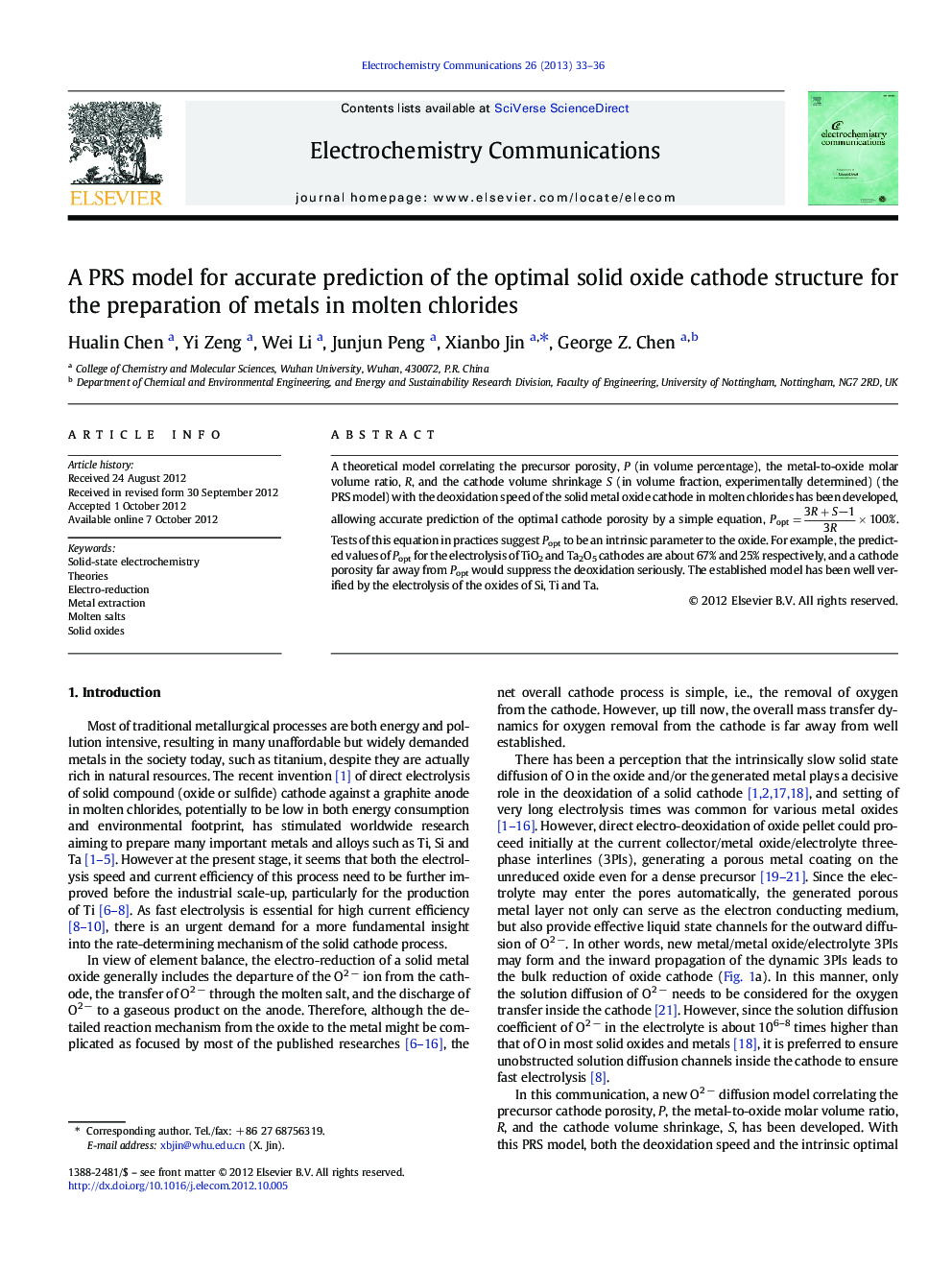| Article ID | Journal | Published Year | Pages | File Type |
|---|---|---|---|---|
| 179616 | Electrochemistry Communications | 2013 | 4 Pages |
A theoretical model correlating the precursor porosity, P (in volume percentage), the metal-to-oxide molar volume ratio, R, and the cathode volume shrinkage S (in volume fraction, experimentally determined) (the PRS model) with the deoxidation speed of the solid metal oxide cathode in molten chlorides has been developed, allowing accurate prediction of the optimal cathode porosity by a simple equation, Popt=3R+S−13R×100%. Tests of this equation in practices suggest Popt to be an intrinsic parameter to the oxide. For example, the predicted values of Popt for the electrolysis of TiO2 and Ta2O5 cathodes are about 67% and 25% respectively, and a cathode porosity far away from Popt would suppress the deoxidation seriously. The established model has been well verified by the electrolysis of the oxides of Si, Ti and Ta.
► Theoretical model for electro-reduction of solid oxide cathode in molten chlorides ► Accurate prediction of the optimal cathode structure for the fastest deoxidation ► The optimal cathode porosity is an intrinsic parameter of an oxide. ► The precursor porosity has great impact on the deoxidation speed. ► Verification of the model by electrolyses of the oxides of Si, Ti and Ta
